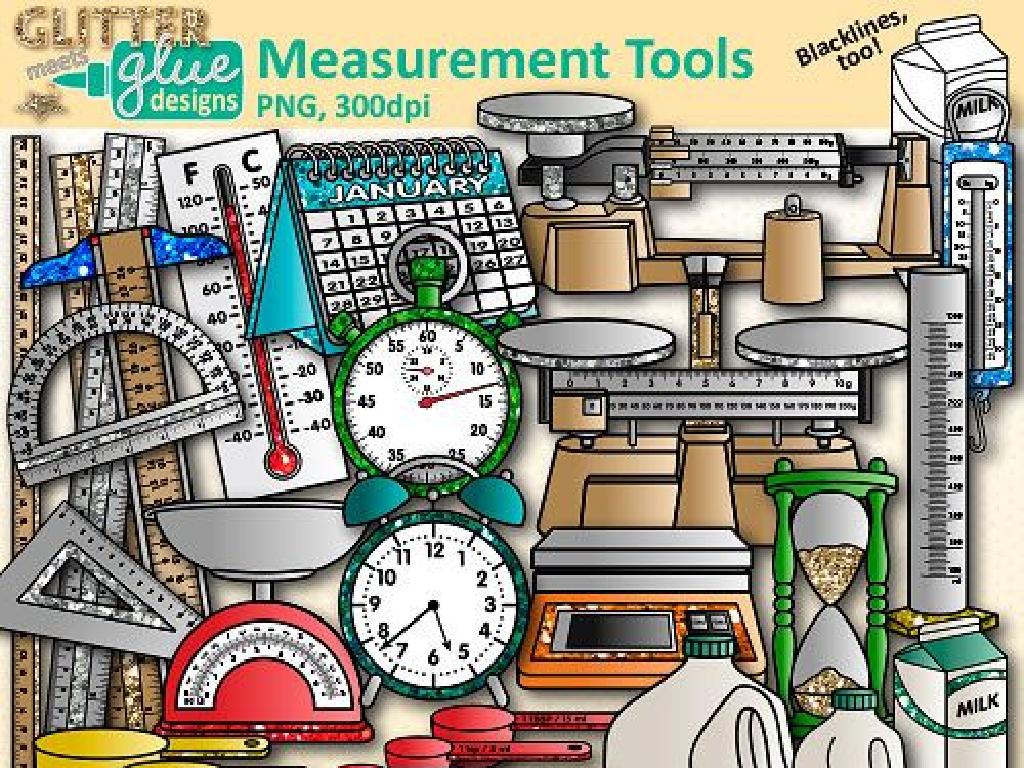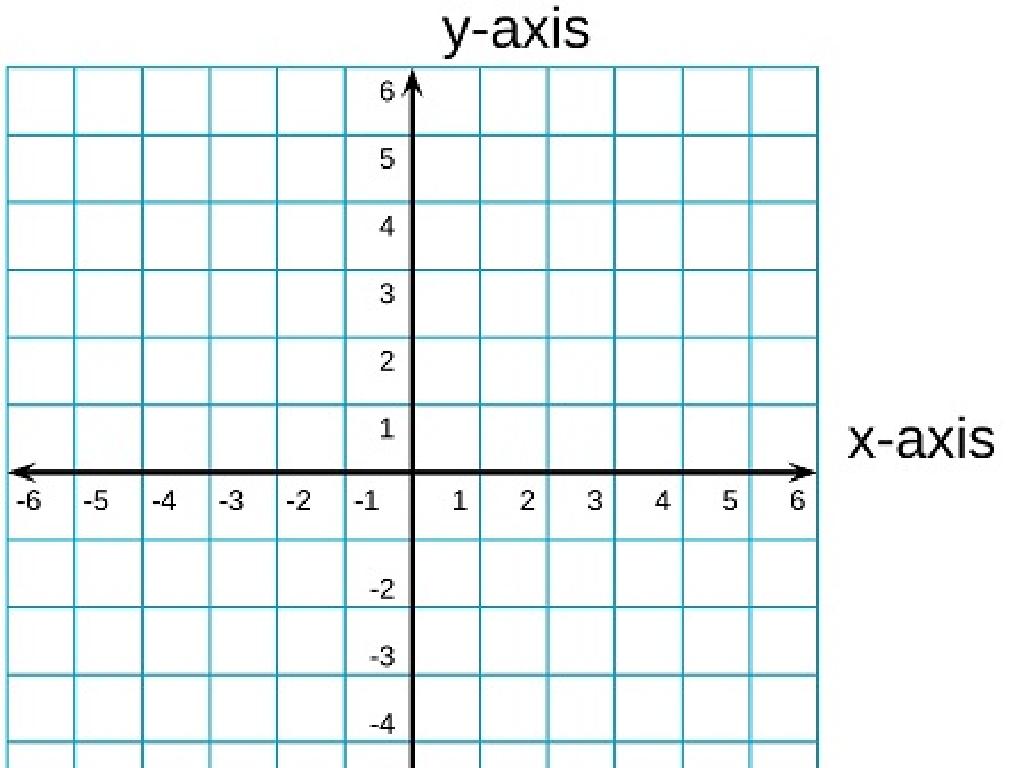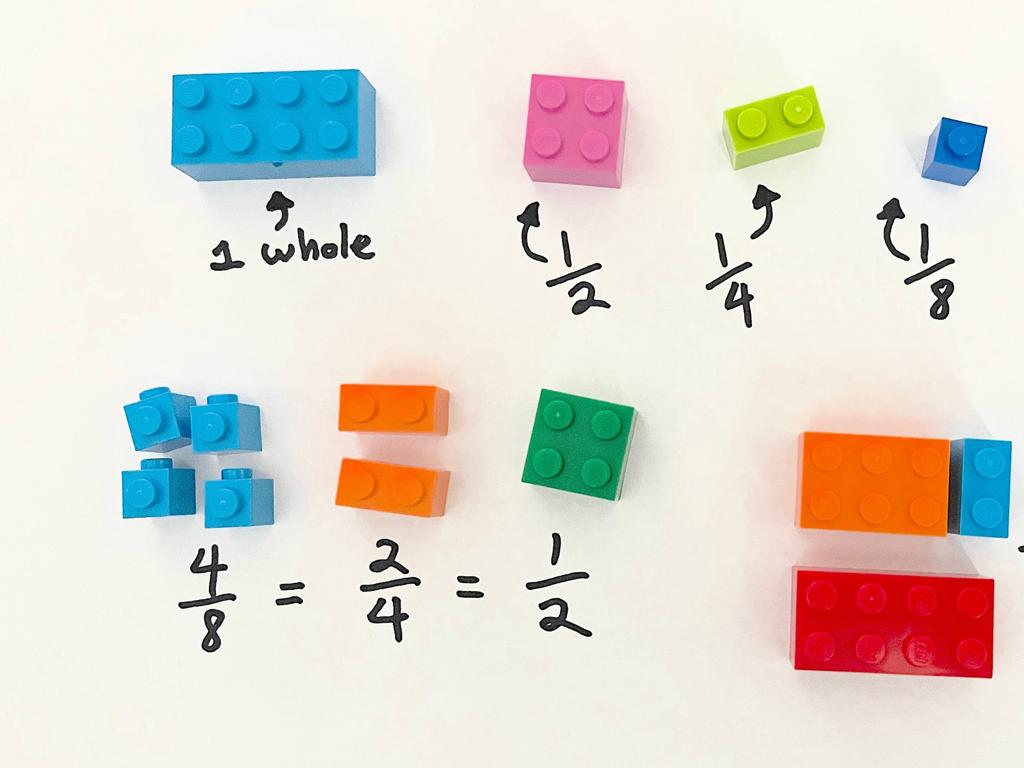Measure And Classify Angles
Subject: Math
Grade: Sixth grade
Topic: Lines And Angles
Please LOG IN to download the presentation. Access is available to registered users only.
View More Content
Today’s Adventure: Measure and Classify Angles
– Basics of lines and angles
– Understand straight, ray, line segment, and their roles in forming angles.
– Types of angles
– Acute, right, obtuse, and straight angles based on their measures.
– Measuring angles with a protractor
– Use a protractor to measure the degree of an angle accurately.
– Angles in daily life
– From architecture to art, angles are everywhere in our world.
|
This slide introduces students to the fundamental concepts of lines and angles, setting the stage for understanding how to measure and classify angles. Begin by explaining the basic components that make up angles: lines, rays, and line segments. Discuss the different types of angles: acute, right, obtuse, and straight, and how they can be identified by their measures. Demonstrate the use of a protractor to measure angles, ensuring to cover how to properly align and read the tool. Highlight the significance of angles in everyday life, such as in building design, art, and even sports, to help students appreciate the practical applications of what they’re learning. Encourage students to bring a protractor to the next class for hands-on practice.
Understanding Angles
– Definition of an angle
– An angle is formed by two rays with a common endpoint
– Vertex: The angle’s pivot point
– The common endpoint is known as the vertex
– Arms: The two lines forming an angle
– Each ray is an arm of the angle extending from the vertex
– Classifying angles by measurement
– Angles can be acute, right, obtuse, or straight based on their size
|
Begin the lesson by defining an angle as the space between two intersecting lines or rays with a common endpoint. Emphasize that the common endpoint is called the vertex, which acts as the pivot point of the angle. The lines or rays are the arms of the angle. It’s crucial for students to visualize this concept, so consider using a protractor or drawing on the board to demonstrate. After explaining the basic components of an angle, transition to classifying angles. Explain that angles are measured in degrees and can be classified as acute (less than 90 degrees), right (exactly 90 degrees), obtuse (greater than 90 degrees but less than 180 degrees), or straight (exactly 180 degrees). Provide examples of each and encourage students to use a protractor to measure and classify angles in class.
Types of Angles
– Acute Angles: Less than 90°
– An angle smaller than a right angle, e.g., 45°
– Right Angles: Exactly 90°
– Obtuse Angles: 90° to 180°
– An angle larger than a right angle but not a full line, e.g., 120°
– Straight Angles: Exactly 180°
– A straight line, no angle
|
This slide introduces students to the basic types of angles they will encounter in geometry. Acute angles are sharp and less than 90 degrees, often found in various shapes like triangles. Right angles are the cornerstone of understanding angles and are exactly 90 degrees, resembling the corners of a square. Obtuse angles are wider, between 90 and 180 degrees, and can be seen in rhombuses or kites. Straight angles are 180 degrees and represent a straight line. Encourage students to use a protractor to measure angles and classify them accordingly. Provide examples of each type of angle for students to identify and measure as a class activity.
Measuring Angles with a Protractor
– Using a protractor correctly
– Place the protractor’s center on the angle’s vertex
– Step-by-step angle measurement
– Read the scale where the second ray of the angle meets the protractor
– Practice with various angles
– Measure angles provided in classwork
– Classify angles after measuring
– Acute, obtuse, right, or straight?
|
This slide is aimed at teaching students how to measure angles using a protractor. Begin by demonstrating the correct placement of the protractor on the vertex of the angle. Walk through the steps of aligning one ray with the zero line of the protractor and reading the measurement where the second ray crosses the number scale. Provide practice angles for students to measure themselves, reinforcing the technique. After measuring, students should classify the angles as acute, obtuse, right, or straight based on the measured degree. Encourage students to verify their measurements with a partner for accuracy and understanding.
Classifying Angles by Degrees
– Learn to classify angles
– Understand degrees measurement
– Degrees tell us the size of an angle
– See angle types with examples
– Acute: 90° and < 180°, Straight: 180°
– Classroom angle hunt activity
– Find angles in the room and determine their type
|
This slide introduces the concept of classifying angles based on their degree measurements. Begin by explaining that angles are measured in degrees, which helps us understand their size. Provide clear examples of each type of angle: acute (less than 90 degrees), right (exactly 90 degrees), obtuse (greater than 90 but less than 180 degrees), and straight (exactly 180 degrees). For the class activity, have students look around the classroom to find and classify angles they see, such as corners of desks, angles between bookshelves, or the angle at which the door is open. This hands-on activity will help solidify their understanding of angle classification. Prepare to offer guidance and ensure that students have the tools necessary to measure and classify angles accurately.
Angles in Geometry: Building Shapes
– How angles form shapes
– Angles are the corners in shapes. For example, squares have four right angles.
– Angle sums in triangles
– Every triangle has angle sum of 180 degrees. Think of it as two right angles put together!
– Angle sums in quadrilaterals
– Quadrilaterals have a total of 360 degrees. It’s like a circle’s full turn!
– Identifying angles in figures
|
This slide introduces students to the concept of how angles are integral to forming various geometric shapes. Begin by explaining that angles are essentially the corners or turns between lines in shapes. Use visual aids to show how different angles create different shapes. Move on to discuss the sum of angles in triangles, highlighting that no matter the type of triangle, the angles always add up to 180 degrees. For quadrilaterals, emphasize that the angles sum up to 360 degrees, akin to a full circle. Encourage students to practice identifying angles in different geometric figures, reinforcing their understanding of angle measurements and their relationship to shape formation. Provide examples of different geometric figures for students to identify and classify the angles present.
Let’s Practice: Angles in Action!
– Measure angles on worksheet
– Classify each angle type
– Acute, right, obtuse, or straight
– Group discussion on findings
– Share how you determined each angle type
– Discuss angle importance
– Why do angles matter in real life?
|
This slide is for a class activity focused on measuring and classifying angles. Provide students with worksheets containing various angles to measure using protractors and then classify as acute, right, obtuse, or straight. After individual work, students will form groups to discuss their findings and methods. Encourage them to explain their reasoning for classifying each angle. Conclude with a class discussion on the importance of understanding angles, relating to real-world applications such as construction, art, and navigation. This activity will help solidify their knowledge through practical application and peer learning.
Class Activity: Angle Hunt
– Find angles in the classroom
– Measure angles with a protractor
– Use the protractor’s baseline and center point for accuracy
– Classify each angle
– Acute, right, obtuse, or straight
– Present findings to the class
|
This interactive activity encourages students to explore their surroundings and identify various angles in the classroom. Provide a brief demonstration on how to use a protractor correctly, ensuring students understand how to align it with the angle’s vertex and baseline. After measuring, students should classify the angles they find as acute (less than 90 degrees), right (exactly 90 degrees), obtuse (greater than 90 degrees but less than 180 degrees), or straight (exactly 180 degrees). Once they have their list, ask them to prepare a short presentation to share their findings with the class. This will help reinforce their understanding of angle measurement and classification. For the activity, consider having different stations with set angles for students who may have difficulty finding angles in the classroom.
Lesson Recap & Homework
– Review angle measurement
– Classify angles from today’s lesson
– Homework: Find & measure 10 home angles
– Use a protractor to measure angles in your home, like door corners.
– Next class: Introduction to triangles
– We’ll explore different types of triangles and their properties.
|
As we conclude today’s lesson on measuring and classifying angles, remind students of the key concepts covered. For homework, they should find 10 different angles around their home, measure them with a protractor, and classify each as acute, obtuse, right, or straight. This practical exercise will reinforce their understanding and help them recognize angles in everyday objects. Prepare students for the upcoming lesson on triangles by hinting at the connection between angles and triangle shapes. Encourage them to be curious about how angles form the corners of various triangles they’ll learn about next.





